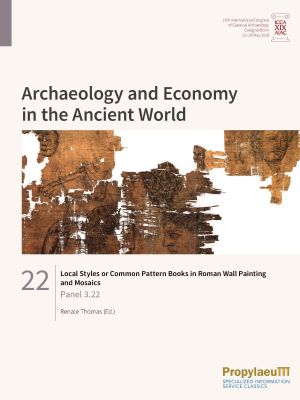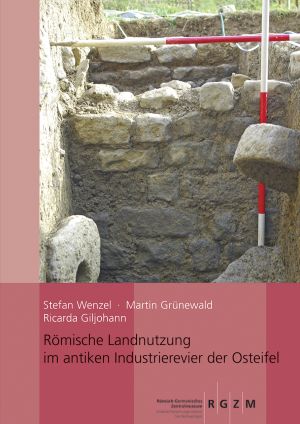Thomas, Renate
Local Styles or Common Pattern Books in Roman Wall Painting and Mosaics: Panel 3.22
The presentations of the panel "Local styles or common pattern books in Roman mural painting and mosaics" illustrated various aspects of the working methods of ancient workshops and their production. I. Bragantini used the example of the wall paintings in Cartagena and Lyon to emphasise these were made by Italian workshops that in her opinion. While St. Falzone, M. Marano and P. Tomassini focused on the characteristics of the local style in wall painting in Ostia, C. Sbrolli concentrated on the iconographic characteristics of the 'Workshop of the Vetti' in Pompeii. E. Moormann and D. Esposito investigated the question of whether the development of wall painting in Flavian times testified to continuity or a new impulse. C. Boschetti et al. highlighted the differences in the production of mosaics in Aquileia between the Augustan period and the 4th century AD: while the first workshops worked with high quality materials from Campania and probably came from there, the later mosaicists were probably local, as they used cheap materials available locally. B. Tober pointed out that there was an 'international' agreement on the manner of appointing certain room for certain functions. E. Aydogdu and A. Kazim Öz used a mosaic in Metropolis as an example to show that three-dimensional leaf patterns are also based on models that go back to geometric forms.
Römische Landnutzung im antiken Industrierevier der Osteifel
From the beginning of the Roman Imperial period, the area between Mayen on the edge of the Eifel and Andernach on the Rhine experienced an enormous increase in its economic activity. In a short time, an industrial area developed there, from which wide areas in the Roman north-western provinces were supplied with high-quality basalt lava millstones, light tuff and later also heat-resistant ceramics. Quarries were newly established, land and water routes were expanded, existing outlets were extended and others were still to be developed. Setbacks in the 3rd and 4th centuries were followed by further booms.
How could the numerous workers and their families be fed, and what consequences did the success of the stone and energy-intensive pottery industries have for the environment? In order to clarify this, two Roman villas on the northern edge of the Mayen millstone quarries were investigated with geophysical measurements, excavations, geoarchaeological and botanical studies, and their entire surroundings were explored. The results are presented in this book. The inhabitants of the villa Mendig, »Im Winkel« were themselves involved in the production of millstones. In late antiquity, a surface drainage system there probably kept a transhipment point for millstones on the Segbach dry, while a fortified storage building ensured the supply of the quarrymen. Quarry owners resided in the villa Mendig, »Lungenkärchen«. It turned out to be an axial courtyard with an impressive water basin. Inspections led to the discovery of the burial ground belonging to »Lungenkärchen« with monuments made of Lorraine limestone as well as the discovery of a previously unknown vicus »Im Terl«.








